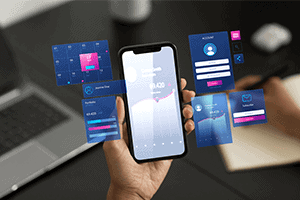Hey there! Welcome to Beta Breakers, your go-to guide for ensuring your app works seamlessly across different mobile devices. Having an app that works well on every device is key to success. So, let’s dive into the ins and outs of app compatibility and how you can ensure your app delivers a great user experience on any device!
different mobile devices. Having an app that works well on every device is key to success. So, let’s dive into the ins and outs of app compatibility and how you can ensure your app delivers a great user experience on any device!
Understanding App Compatibility
Let’s start with the basics. App compatibility is all about making sure your app works smoothly on different devices, operating systems, and screen sizes. It’s like making sure your favorite recipe tastes just as good no matter what kitchen you cook it in – whether it’s a fancy chef’s kitchen or a cozy home kitchen.
The Significance of App Compatibility
Why does app compatibility matter, you ask? Well, think about it this way – if your app doesn’t work properly on certain devices, you’re missing out on potential users and revenue. It’s like throwing a party but only inviting half the guests – you’re not going to have as much fun, are you? By ensuring your app is compatible across various devices, you’re opening up your app to a wider audience and giving everyone a chance to enjoy what you’ve created.
Challenges in Ensuring App Compatibility
Now, let’s talk about the challenges. With so many different devices and operating systems out there, it can feel like trying to juggle a dozen balls at once. Each device has its own quirks and nuances, and making sure your app works well on all of them can be a real challenge. But fear not! With the right strategies and tools, you can overcome these challenges and ensure your app is compatible with every device under the sun.
Best Practices for Ensuring App Compatibility
Choosing the Right Development Approach
First things first, you need to choose the right development approach. Whether you go native or opt for a cross-platform solution like React Native or Flutter, the choice you make will have a big impact on compatibility. It’s like choosing the right tool for the job – you want something that’s going to get the job done efficiently and effectively.
Responsive Design and Layout
Next up, responsive design is key. Think of it like a good pair of jeans – they fit you perfectly no matter what shape you’re in. By designing your app to be responsive, you’re ensuring that it looks and works great on any device, whether it’s a tiny smartphone or a large tablet.
Testing Across Various Mobile Devices
Testing, testing, testing – it’s crucial for ensuring compatibility. You wouldn’t launch a rocket without testing it first, right? The same goes for your app. Make sure you test it on a variety of devices to catch any compatibility issues before they become a problem.
Utilizing Cross-Platform Development Tools
Cross-platform development tools can be a lifesaver when it comes to compatibility. They allow you to write code once and deploy it across multiple platforms, saving you time and effort. It’s like having a magic wand that makes your app work perfectly on every device.
Optimizing Performance and Resource Usage
Performance is another important aspect of compatibility. Nobody likes waiting around for an app to load, right? By optimizing performance and resource usage, you can ensure that your app runs smoothly on all devices, regardless of their specs.
Monitoring and Updates
Once your app is live, the work isn’t over. You need to keep an eye on it and make sure it stays compatible with new devices and operating system updates. It’s like taking care of a plant – you need to water it regularly to keep it healthy and thriving.
User Feedback and Iterative Improvement
Last but not least, listen to your users! They’re the ones using your app, so their feedback is invaluable. Take their suggestions on board and use them to make your app even better. It’s like having a focus group that’s always there to tell you what they think.
Ensuring app compatibility across various mobile devices is essential for success in today’s digital world. By following the best practices outlined in this guide, you can create an app that works seamlessly on every device, maximizing your reach and delighting your users. At Beta Breakers, we’re here to help you navigate the complexities of app compatibility and ensure your app stands out from the crowd.
FAQs
FAQ 1: Why is app compatibility important?
App compatibility ensures that your app works well on all devices, maximizing your reach and user satisfaction.
FAQ 2: How can I test my app across different devices?
Beta Breakers offers comprehensive testing services to ensure your app works seamlessly on a variety of devices and operating systems.
FAQ 3: What are some common challenges in ensuring app compatibility?
Challenges include the diversity of devices and operating systems, as well as the need to adhere to different design guidelines and technical requirements.
FAQ 4: How often should I update my app for compatibility?
Regular updates are important for addressing compatibility issues and ensuring your app remains compatible with new devices and operating system updates.
FAQ 5: How can user feedback help improve app compatibility?
User feedback provides valuable insights into compatibility issues and helps prioritize improvements to enhance the user experience.
